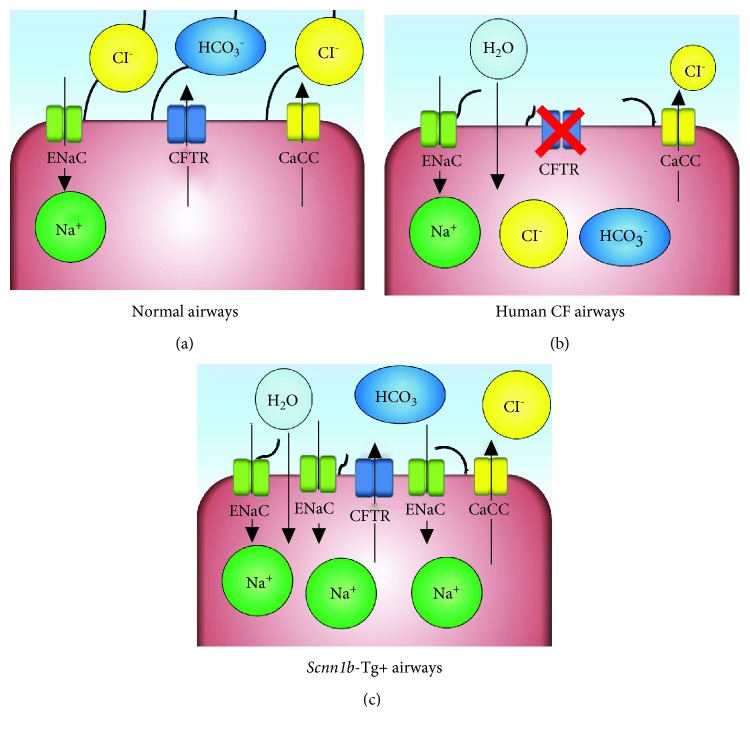Figure 2.
Ion-channel physiology in airways. (a) The hydration state of normal airways in airway surface liquid (ASL) is regulated by the concerted action of ion channels. Major ion channels responsible for regulating chloride (Cl−)/sodium (Na+) transport are the cystic fibrosis transmembrane conductance regulator (CFTR), calcium-activated chloride channels (CaCCs), and epithelial Na+ channels (ENaC). CFTR and CaCCs are responsible for regulating Cl− transport, while ENaC facilitates epithelial Na+ absorption. CFTR is also responsible for bicarbonate (HCO3−) transport that regulates the local pH of the airways. Balanced ionic transport maintains water contents of ASL in the physiological range. (b) In cystic fibrosis, a dysfunctional CFTR channel results in the net movement of sodium ions into the cytoplasm of airway epithelial cells. The osmotic drive due to sodium hyperabsorption dictates the net movement of ASL water into the cytoplasm of airway epithelial cells. These alterations result in the pathology of CF lung disease. (c) In mice, the chloride ion transport inhibition due to the genetic inactivation of a CFTR channel defect is compensated by relatively more prominent CaCCs. In Scnn1b-Tg+ airways, the overexpression of ENaC results in the hyperabsorption of sodium ion into the cytoplasm of airway epithelial cells, an ionic imbalance defect similar to human CF airways.

